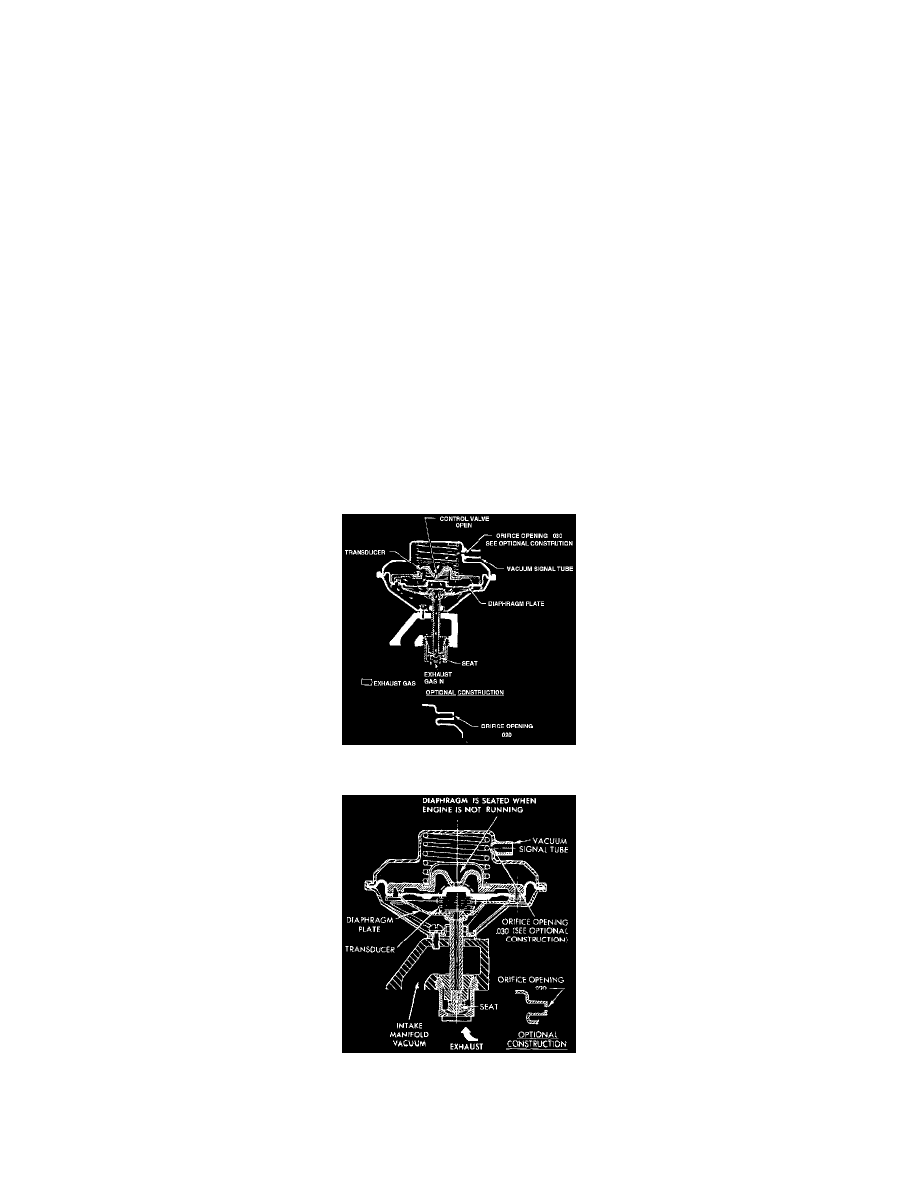Firebird V8-305 5.0L (1982)

EGR Valve: Description and Operation
This valve is used on some 1977-82 vehicles to regulate the EGR flow according to engine load. The back pressure EGR valve is equipped with a
transducer located inside the valve. The transducer uses exhaust gas pressure to control an air bleed within the valve to modify the vacuum signal
from the carburetor.
A small diaphragm controlled valve inside the EGR valve assembly acts as a pressure regulator. The control valve receives an exhaust back
pressure signal through the hollow shaft which exerts a force on the bottom of the control valve diaphragm, opposed by light spring pressure. A
metal deflector plate prevents hot exhaust gases from flowing directly on the diaphragm.
Vacuum is applied to the EGR valve from the carburetor spark port, to ensure no exhaust gas recirculation during idle. During off-idle operation,
manifold vacuum is applied to the vacuum chamber through a restriction in the signal tube. When engine load is light, and back pressure is low,
the control valve is open, allowing air to flow from the bleeds in the diaphragm plate, through the control valve orifice, an into the vacuum
chamber. The air bleeds off vacuum, decreasing the signal trying to open the EGR valve. If back pressure does not close the control valve, sealing
off the air flow, there will not be any vacuum buildup to open the EGR valve for exhaust gas recirculation.
When power demands are made on the engine, and exhaust gas recirculation is required, exhaust back pressure increases, closing the control valve,
thereby shutting off air flow through the valve. Vacuum builds up in the vacuum chamber until the spring force holding the EGR valve closed is
overcome.
When the EGR valve opens, the exhaust pressure decreases because some of the exhaust gas is flowing into the intake manifold through the EGR
passage. In actual operation, the system will reach a balanced condition providing maximum EGR operation.
Any increase in engine load will momentarily increase the exhaust signal, causing the control valve to close, allowing a stronger vacuum signal.
The system will then stabilize at a greater EGR flow.
At maximum engine load, when manifold vacuum is nearly zero, there will be no EGR flow momentarily. This is due to the insufficient vacuum
required to pull the valve open, even though high exhaust back pressure has closed the control valve.
Fig. 61 Positive Back Pressure EGR Valve. Typical
Fig. 62 Negative Back Pressure Valve. Typical
Two types of back pressure EGR valves are used on General Motors vehicles. A Positive Back Pressure EGR Valve--Fig 61--is used on most
engines. A Negative Back Pressure EGR Valve--Fig 62--is used on those engines with relatively low back pressure to provide the desired opening
